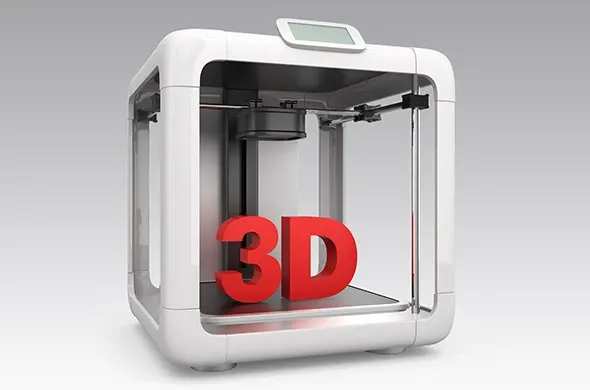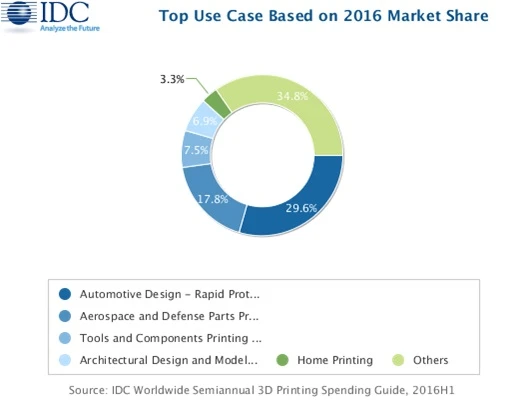Semiconductor Revenue Grew 21 Percent in 2025
Worldwide semiconductor revenue totaled $793 billion in 2025, according to preliminary results by Gartner.

Worldwide purchases of 3D printers, materials, software, and related services are expected to total $13.2 billion in 2016. According to a recent update to the Worldwide Semiannual 3D Printing Spending Guide from IDC, global spending on 3D printing will experience a five-year compound annual growth rate (CAGR) of 22.3% with revenues reaching $28.9 billion in 2020.
The United States will deliver roughly a quarter of worldwide 3D printing revenues throughout the 2015-2020 forecast period while the next three largest regions - Western Europe, Asia/Pacific (excluding Japan), and Japan - combined will deliver more than 50% of total revenues. While the fastest growth will come from the Middle East and Africa (MEA) and Central and Eastern Europe (CEE) regions, Western Europe's strong growth will significantly close the revenue gap with the United States by 2020. In fact, five of the eight geographic regions covered in the Spending Guide will see total revenue growth of more than 200% over the five-year forecast period.
Discrete Manufacturing is the dominant industry for 3D printing, delivering more than two thirds of all worldwide revenues through much of the forecast. And while all the industries examined in the Spending Guide will experience revenue growth of more than 100% over the forecast period, Healthcare will leap from the number 5 position in 2016 to the number 2 spot in 2020 with revenues growing to more than $3.1 billion. This move will be driven by strong investments from healthcare providers in both the United States and Western Europe.
The use cases that will generate the largest revenues for 3D printing in 2016 are Automotive Design - Rapid Prototype Printing (more than $3.9 billion) and Aerospace and Defense Parts Printing (nearly $2.4 billion). Tools and Component Printing will also emerge as a significant market in 2016. By 2020, Dental Printing will become a strong challenger for the number 3 position in terms of worldwide revenues while Medical Implant & Device Printing, Product Creation and Prototype Printing, and Prosthetics Printing will each generate worldwide revenues of more than $1 billion.

Purchases of 3D printers and materials combined will produce nearly two thirds of total worldwide revenues throughout the forecast period. Revenues for computer-aided design (CAD) software are forecast to triple over the five-year forecast period while the market for on-demand parts services will nearly match this growth. The gains in both software and on-demand parts printing are being driven by the rapidly expanding use of 3D printing for design prototyping and products that require a high degree of customization in non-traditional environments.